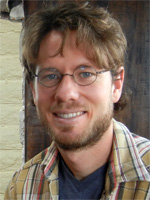When I first moved to the Sonoran Desert to pursue my doctoral degree I expected to find seas of sand and rocks, sparsely populated by tumbleweeds fighting for survival in the brutal spotlight that is the hot desert sun. Instead, I was met by an abundance of life, especially small plants, covering the desert floor and likening it to a golf green. This unexpected experience led me to ponder the strategies these plants employ to survive and even thrive in the dry, unpredictable desert environment.
Plants adapting to harsh environments
One particularly fascinating strategy they employ is seed heteromorphism, or the simultaneous production of multiple visually distinct seed types by an individual. In general, plants produce one type of seed with impeccable accuracy (think apple and watermelon seeds), which is presumably best adapted for its environment, or has the highest chance of surviving and making more seeds. In fact, producing one type of offspring is the norm for nearly all organisms, including humans.
Furthermore, each of the different seeds has unique characteristics. Some are excellent dispersers, helping plants establish new territories. Others have adaptations to prevent dispersal and thus help hold down the home fort.

As Scholl discovered during his research, the desert has an abundance of life employing fascinating survival strategies.
Research suggests that seed heteromorphism allows plants to hedge their bets against an unpredictable environment. This is akin to the old adage of not putting all of your eggs in one basket where the different characteristics of the seeds are equivalent to the different baskets. For example, suppose a plant could make two types of seeds; ones that flourish in dry conditions but drown in wet conditions, and ones that flourish in wet conditions but perish in drought. If the plant is not able to predict whether it will be a dry or wet year, then producing only one of the seed types will result in either complete success or complete failure. Thus, its best bet is to make half of each type of seed so that no matter what the conditions are, at least half of its seeds will succeed. Bet hedging can serve as a buffer, allowing plants to cope with changes in their environment such as climate change.
This all sounds great in theory, but empirical evidence is lacking to support the claim that seed heteromorphism is a bet-hedging strategy. That’s where I come in; the focus of my dissertation is to evaluate this claim through a series of experiments and mathematical modeling. Since future environmental variation, such as desertification, is predicted to increase, evaluating potential bet-hedging strategies is critical to understanding and predicting plant population dynamics in the face of climate change. For example, how long will seed-heteromorphic plants be able to buffer against rising temperatures before they go extinct?
Scientists adapting to career realities
Like seed heteromorphism, ecoservice, or the pursuit of research beyond inquiry and into application, may also be considered a bet-hedging strategy with respect to the unpredictable nature of science careers. Currently only about 30% of doctoral students successfully land academic positions. By engaging in ecoservice, you form new connections with potential future colleagues, build and hone interpersonal communication skills, develop sound organizational skills, and most importantly gain leadership experience. This type of skill-set diversification opens up new job opportunities important to securing a rewarding career.
For example, as an undergraduate I founded an undergraduate research journal to stimulate research among my peers. As part of this effort, I met numerous faculty and administrators, two of whom I ended up getting a job with during my senior year. In addition, I serve on several Ecological Society of America Committees where I have been fortunate enough to meet incredible ecologists, some of whom have approached me about potential postdoc opportunities. Most recently, I led an initiative to bring ecology to life through animation. Along with a team of scientists and artists, I produced four short animations based on the Foundations of Ecology book. Although this initiative is merely a hobby at this point, we have talked about the possibility of turning it into a professional pursuit. In the meantime, our animations are available for free online at ecomotionstudios.com (check them out!).
Of course there are countless other reasons to pursue ecoservice, including the opportunity to be part of something bigger than yourself, which I personally find the most rewarding, and fostering environmental stewardship. However, ultimately we are all similar to desert plants, fighting for growth in a dynamic economy. Consequently, like many successful desert plants, we should hedge our bets by engaging in ecoservice to complement our research and earn opportunities for diverse, fulfilling careers.
